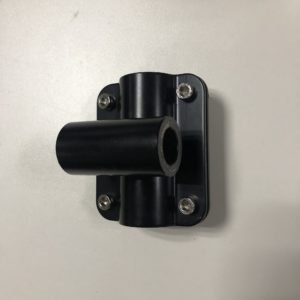Contents:


The quick ratio is calculated by dividing quick assets by current liabilities. This ratio indicates the company’s ability to pay off its short-term debts without relying on the sale of inventory. The company’s current ratio of 0.4 indicates an inadequate degree of liquidity with only $0.40 of current assets available to cover every $1 of current liabilities.
For example, you may have equity in a building your company owns. But that equity is not very liquid because it would be difficult to convert it to cash to cover an unexpected and urgent expense. On the other hand, inventory that you expect to sell in the near future would be considered a liquid asset. Though it’s still not as liquid as cash because although you may expect to sell your stock, unexpected circumstances might come up and stop that from happening.
To summarize, Liquids Inc. has a comfortable liquidity position, but it has a dangerously high degree of leverage. Liquidity is a measure of a company’s ability to pay off its short-term liabilities—those that will come due in less than a year. It’s usually shown as a ratio or a percentage of what the company owes against what it owns. These measures can give you a glimpse into the financial health of the business. It has SAR 6 in current assets for every Riyal in current liabilities, according to its current ratio. With SAR 4 in assets that can be quickly converted to cash for every SAR of current obligations, it has a fast ratio that indicates good liquidity even after eliminating inventory.
Leverage ratios
Vertical common-size analysis of the balance sheet involves stating each balance sheet item as a percentage of total assets. If a company is solvent it is able to accomplish long-term expansion and growth, as well as meeting its long-term financial obligations. A company that is insolvent or is only barely solvent and that has poor liquidity is in a weak position. If a company can access more than enough cash to pay its debts within the next year, it’s generally considered liquid. If it has little access to cash, and specifically cannot raise enough cash to pay its bills over the next 12 months, the company is considered illiquid. Like all financial ratios, a company’s debt ratio should be compared with their industry average or other competing firms.
Kindly note that the content on this website does not constitute an offer or solicitation for the purchase or sale of any financial instrument. Neither our company, nor its directors, employees, trainers, or coaches shall be in any way liable for any claim for any losses or against any loss of opportunity for gain. The trading avenues discussed, or views expressed may not be suitable for all investors/traders. A financial advisor can help you analyze which companies will make good investments.
A high DSO indicates that a business is locking up cash in receivables and takes an excessively long time to collect payment. BILL and its affiliates do not provide tax, legal, or accounting advice. This material has been prepared for informational purposes only, and is not intended to provide, and should not be relied on, for tax, legal, or accounting advice.
professional bookkeeping service ratio and liquidity ratio can tell you how well a company can pay its long-term and short-term financial obligations respectively. A firm’s debt-to-equity ratio (D/E ratio) compares how much overall value, or equity, a company has compared to its overall debts. This is a measure of solvency, as it compares the company’s total value against its total liabilities.
PPG INDUSTRIES INC Management’s Discussion and Analysis of Financial Condition and Results of Operations (form 10-Q) – Marketscreener.com
PPG INDUSTRIES INC Management’s Discussion and Analysis of Financial Condition and Results of Operations (form 10-Q).
Posted: Fri, 21 Apr 2023 19:14:05 GMT [source]
BILL makes no representations as to the accuracy or any other aspect of information contained in other websites. When I took the exam, I didn’t get any ratio questions in the multiple-choice question section, but one of my essay questions asked me to calculate over 20 ratios for each of the two companies. But if I could do it, I’m confident that you can too, with some practice. There are many market value ratios, but the most commonly used are price per earnings (P/E) and dividend yield.
Why Is Liquidity Important For Businesses?
It also refers to how easily an asset can be converted into cash on short notice and at a minimal discount. Assets such as stocks and bonds are liquid since they have an active market with many buyers and sellers. Companies that lack liquidity can be forced into bankruptcy even if it’s solvent. All current assets are due within one year and therefore have essentially equal liquidity. Short-term notes payable are shown on the balance sheet with current liabilities.
Liquidity ratios are used to measure a company’s ability to meet its long-term obligations. A larger number indicates greater solvency than a smaller number. For example, a company with a solvency ratio of 1.2 is solvent, while one whose ratio is 0.9 is technically insolvent. One with a ratio of 1.5 is more solvent than one with a ratio of 1.4. Financial ratios are categorized according to the financial aspect of the business which the ratio measures.
Liquidity ratio indicates the ability of a company o debtor to pay off all of its liabilities using its liquid assets without resorting to any form of external financing. The presence of liquid assets in a company or how easily a company can convert its assets to cash is referred to as liquidity. Liquidity ratios can be used for two forms of analysis, these are internal analysis and external analysis. When the liquidity of the two companies is compared, external analysis has taken place. The comparison is often done using two companies in different industries to evaluate the effectiveness, performance, and liquidity of the companies.
A higher ratio indicates a greater degree of leverage, and consequently, financial risk. Accounting software helps a company better determine its liquidity position by automating key functionality that helps smooth cash inflow and outflow. A balance sheet is a way to look at how much your company owns and how much it owes at a given point in time.
These four financial statements, augmented by footnotes and supplementary data, are interrelated. In addition, there are other sources of financial information, such as management discussion and analysis, auditor’s reports, etc. The statement of changes in equity reflects information about the increases or decreases in each component of a company’s equity over a period. For internally generated intangible assets, IFRS require that costs incurred during the research phase must be expensed. Under IFRS, property used to earn rental income or capital appreciation is considered to be an investment property. IFRS provide companies with the choice to report an investment property using either a historical cost model or a fair value model.
Current Ratio
However, financial leverage based on its solvency ratios appears quite high. Debt exceeds equity by more than three times, while two-thirds of assets have been financed by debt. Note as well that close to half of non-current assets consist of intangible assets .
Lockheed Martin Reports First Quarter 2023 Financial Results – Media – Lockheed Martin – Releases
Lockheed Martin Reports First Quarter 2023 Financial Results.
Posted: Tue, 18 Apr 2023 11:32:14 GMT [source]
With liquidity, you’re assessing how well the company can run its operations in the short term. Investors can also analyze this using a metric called the quick ratio, which runs the same calculation but only uses cash or cash-like assets. The quick ratio is a strong measure of immediate liquidity, meaning how a firm can respond to financial needs today. Liquidity ratios measure a company’s ability to pay short-term obligations of one year or less (i.e., how quickly assets can be turned into cash). Working capital is defined as the amount of current assets minus the amount of current liabilities.
It includes paying off debts and other expenses due in more than a year. The debt ratio measures the proportion of debt a company has to its total assets. Companies use liquidity ratios to measure working capital performance – the money available to meet your current, short-term obligations . The cash ratio is different from both the quick and current ratios in that it only takes into account assets that are the easiest to convert into cash. These assets are cash and cash equivalents, such as marketable securities, money orders, or money in a checking account. It measures the company’s ability to cover its short-term obligations using only its cash and cash equivalents.
Century 21 Accounting: General Journal
It is best to use one of the solvency ratios when trying to measure a company’s ability to pay its short-term obligations as they become due. Liquidity ratios are a class of financial metrics used to determine a debtor’s ability to pay off current debt obligations without raising external capital. The interest coverage ratio measures the company’s ability to meet the interest expense on its debt, which is equivalent to its earnings before interest and taxes .

The level of liquidity of an asset can affect its value and risk. In accounting, liquidity refers to the ability of a business to pay its liabilities on time. Current assets and a large amount of cash are evidence of high liquidity levels. Liquidity refers to a company’s ability to pay both current and long-term debts.
Debt-to-Assets
Just be cautious about the limits of external liquidity ratio analysis. The effectiveness of these comparisons will be strongest when comparing companies of a similar size in a similar geographic region. The results may be less accurate when you compare your company to those of different sizes and territories. Solvency ratios need to be viewed alongside other financial metrics, such as liquidity, profitability, and growth ratios, to get a comprehensive picture of a company’s long-term health.
- In some cases, when liquidity ratios are used in examining the status of a company, they give a sneak peep into the solvency or otherwise of the company.
- Businesses need to have sufficient liquidity to pay their bills on time, meet their loan payments, and pay their employees.
- It includes paying off debts, bills, and other expenses due within a year or less.
- Companies with strong liquidity are generally seen as more financially stable and less risky than those with weak liquidity.
- A liquidity ratio is a financial metric that measures your company’s ability to pay off your existing debts.
This is a rather accurate measure since earnings can be manipulated. To calculate the solvency ratios described in the previous section, use the formulas shown below. The company’s balance sheet has the values you need to calculate these ratios.
What is solvency? Definition and examples
Liquidity refers to a company’s ability to pay short-term obligations, while solvency refers to its capacity to meet its long-term obligations. Liquidity also refers to a business’ ability to sell assets rapidly to raise cash. A company that has poor liquidity but strong solvency is sometimes referred to as having a cash-flow problem.
BLONDER TONGUE LABORATORIES INC MANAGEMENT’S DISCUSSION AND ANALYSIS OF FINANCIAL CONDITION AND RESULTS OF OPERATIONS (form 10-K) – Marketscreener.com
BLONDER TONGUE LABORATORIES INC MANAGEMENT’S DISCUSSION AND ANALYSIS OF FINANCIAL CONDITION AND RESULTS OF OPERATIONS (form 10-K).
Posted: Mon, 17 Apr 2023 21:10:07 GMT [source]
A company considered to be liquid has a sufficient amount of cash or cash equivalents on hand to meet these dues. The financial leverage or debt ratios focus on a firm’s ability to meet its long-term debt obligations. They use the firm’s long-term liabilities on the balance sheet such as payable bonds, long-term loans, or pension funds. The goal of income statement analysis is to derive an effective measure of future earnings and cash flows.

A balance sheet provides a “snapshot” of a company’s financial condition. Think of the balance sheet as a photo of the business at a specific point in time. It reports major classes and amounts of assets, liabilities, stockholders’ equity, and their interrelationships as of a specific date.
As an alternative, the external analysis compares the liquidity ratios of several businesses or an entire sector. When setting benchmark targets, it is helpful to compare the company’s strategic orientation to its rivals. Where possible, shift your short-term obligations into long-term debts. This usually reduces your monthly bills and can translate into more cash on hand. Just make sure to account for the extra money you’ll spend on the increased interest, as you’ll be spending more in the long term.
Liquidity refers to the ease with which an asset, or security, can be converted into ready cash without affecting its market price. Banks and investors look at liquidity when deciding whether to loan or invest money in a business. A low DSO indicates that you’re collecting money on a relatively rapid basis, giving you better cash flow. You can use this financial data to compare your company to other industry leaders. This can be important when setting benchmark goals and charting a course for the future.
- Original price was: $180.00.$99.99Current price is: $99.99. Check Available Discount


















